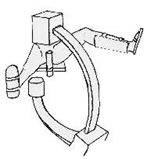Evaluation of factors determining the functional outcome of DHS in trochanteric fractures
Abstract
Background: In spite of improvement and modification for intertrochanteric fracture in the conservative line of treatment the ideal anatomical and functional result could not be achieved.Until now mentioned factors posteromedial support communition has been considered to bea major prognostic factor in the determination of the functional outcome. Current literature almost neglects other important potential prognostic factor i.e. lateral trochanteric wall fracture.The current study has aimed at studying Assessment of functional outcomes of Dynamic Hip screw fixation in intertrochanteric fracture Evans 3 and 4 types.
Method: 126 cases were registered in the study out of which 64 cases of Trochanteric fractures which were admitted in the Orthopaedic wards and treated by internal fixation using standard Dynamic Hip Screw (DHS) were included in the study. Preoperative assessment of fracture geometry was done using Evan’s classification.
Result: Age of patients ranged from 22 years to 88 years, with the average being 55 yrs. the anatomical reduction was achieved in 82.5% of group A with intact lateral trochanteric wall whereas it was achieved in only 33% of the other group. Average impaction in group A was found to be 5.5mm and average impaction in group B was 14mm. 85% of group A had functional outcome excellent to good whereas in 66% of group B it was fair to poor.
Conclusion: Intact lateral trochanteric wall helps in achieving anatomical reduction, imparts inherent stability and prevents excessive collapse, limb shortening and sliding of the screw. Thus it helps in achieving good functional outcome making lateral trochanteric wall fracture good predictor of functional outcome.
Downloads
References
Jewett EL. One-piece angle nail for trochanteric fractures. J Bone Joint Surg 1941;23(4):803-810.
McLoughlin SW, Wheeler DL, Rider J, Bolhofner B. Biomechanical evaluation of the dynamic hip screw with two- and four-hole side plates. J Orthop Trauma. 2000;14(5):318-323. doi: https://doi.org/10.1097/00005131-200006000-00002.
Schumpelick W. A new principle in the operative treatment of trochanteric and Jantzen PM fracture of the femur. J Bone Surg. 1955;37A(4):693-698.
Mulholland RC, Hunn DR. Sliding screw plate fixation of intertrochanteric femoral fracture. J Trauma 1972;12(7):581-591. doi: https://doi.org/10.1097/00005373-197207000-00006.
Li S, Chang SM, Jin YM, Zhang YQ, Niu WX, Du SC, et al. A mathematical simulation of the tip-apex distance and the calcar-referenced tip-apex distance for intertrochanteric fractures reduced with lag screws. Injury. 2016;47(6):1302-1308. doi: https://doi.org/10.1016/j.injury.2016.03.029.
Hanis H. Harris Hip Score. J Bone Joint Surg Am. 1969;5 l-A (4):737-755.
Parker MJ. Valgus reduction of trochanteric fractures. Injury. 1993;24(5):313-316. doi: https://doi.org/10.1016/0020-1383(93)90053-9.
Bhatti A, Power D, Qureshi S, Khan I, Tan S. A prospective trial of proximal femoral nail versus dynamic hip screw for unstable and complex intertrochanteric fractures of the femur. J Bone Joint Surg. 2004;8:377-377.
Sperner G, Wanitschek P, Benedetto KP, Glotzer W. Technical errors and early complications of osteosynthesis of pertrochanteric femoral fractures using the dynamic hip screw - Unfallchirurg. 1989;92(12):571-576.
Larsson S, Friberg S, Hansson LI. Trochanteric fractures. Influence of reduction and implant position on impaction and complications. Clin OrthopRelat Res. 1990;(259):130-139.
Galanakis IA, Steriopoulos KA, Dretakis EK. Correct placement of the screw or nail in trochanteric fractures. Effect of the initial placement in the migration. Clin OrthopRelat Res. 1995;(313):206-213.
Baumgaertner M, Curtin S, Lindskog D, Keggi J M. The value of the tip apex distance in predicting failure of
fixation. J Bone Joint Surg Am. 1995;77(7):1058-1064. doi: https://doi.org/10.2106/00004623-199507000-00012.
Baumgaertner M, Solberg BD. Awareness of tip-apex distance reduces failure of fixation of trochanteric fractures of the hip. J Bone Joint Surg Br. 1997;79(6):969-971. doi: https://doi.org/10.1302/0301-620x.79b6.7949.
Pervez H, Parker MJ, Vowler S. Prediction of fixation failure after sliding hip screw fixation. Injury. 2004;35(10):994-998.doi: https://doi.org/10.1016/j.injury.2003.10.028.
Rha JD, Kim YH, Yoon SI, Perk YS, Lee MH. Factors affecting sliding of the leg screw in intertrochanteric fractures. International Orthop. 1993;17(S):320-324. doi: https://doi.org/10.1007/bf00181709.
Nakata K, Ohzono K, Hiroshima K, Toge K. Serial change of sliding in intertrochanteric femoral fractures
treated with sliding screw system. Arch OrthopTrauma Surg.1994;113(5):276-280. doi: https://doi.org/10.1007/bf00443817.
Templeman D, Baumgaertner MR, Leighton RK, Lindsey RW, Moed BR: Reducing complications in the surgical treatment of intertrochanteric fractures. Instr Course Lect. 2005;54:409-415.
Joseph TN, Chen AL, Kummer FJ, Koval KJ. The effect of posterior sag on the fixation stability of intertrochanteric hip fractures. J Trauma Acute Care Surg. 2002;52(3):544-547. doi: https://doi.org/10.1097/00005373-200203000-00021.

Copyright (c) 2020 Author (s). Published by Siddharth Health Research and Social Welfare Society

This work is licensed under a Creative Commons Attribution 4.0 International License.


 OAI - Open Archives Initiative
OAI - Open Archives Initiative


















 Therapoid
Therapoid

